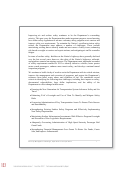Performance And Accountability Report - Fiscal Year 2013 - Federal Aviation Administration - U.s. Department Of Transportation Page 128
ADVERTISEMENT
 1
1  2
2  3
3  4
4  5
5  6
6  7
7  8
8  9
9  10
10  11
11  12
12  13
13  14
14  15
15  16
16  17
17  18
18  19
19  20
20  21
21  22
22  23
23  24
24  25
25  26
26  27
27  28
28  29
29  30
30  31
31  32
32  33
33  34
34  35
35  36
36  37
37  38
38  39
39  40
40  41
41  42
42  43
43  44
44  45
45  46
46  47
47  48
48  49
49  50
50  51
51  52
52  53
53  54
54  55
55  56
56  57
57  58
58  59
59  60
60  61
61  62
62  63
63  64
64  65
65  66
66  67
67  68
68  69
69  70
70  71
71  72
72  73
73  74
74  75
75  76
76  77
77  78
78  79
79  80
80  81
81  82
82  83
83  84
84  85
85  86
86  87
87  88
88  89
89  90
90  91
91  92
92  93
93  94
94  95
95  96
96  97
97  98
98  99
99  100
100  101
101  102
102  103
103  104
104  105
105  106
106  107
107  108
108  109
109  110
110  111
111  112
112  113
113  114
114  115
115  116
116  117
117  118
118  119
119  120
120  121
121  122
122  123
123  124
124  125
125  126
126  127
127  128
128  129
129  130
130  131
131  132
132  133
133  134
134  135
135  136
136  137
137  138
138  139
139  140
140  141
141  142
142  143
143  144
144  145
145  146
146  147
147  148
148  149
149  150
150 The program office initiated recurring pre-operational review
quarter of FY 2015. This creates a seven month delay in the
meetings with the sites that have not yet begun initial operations
program. This increases the total cost to deliver ERAM because
with ERAM. While this process is typical of any site that
of the overhead associated with the program office, Lockheed
would be planning to transition to ERAM-based operations,
Martin Corporation, and service life extension, to deploy ERAM
starting it this far in advance is not typical. This early start is
at sites extends 7 months as well, on the order of approximately
aimed at better understanding any potentially new and specific
$42 million.
downstream needs and proactively addressing them.
The ERAM program continues to use the standing work group
KEY CHALLENGE:
within the construct of the contract between the FAA and
Making Decisions on Facility Consolidation and Modernization
NATCA, as well as Professional Aviation Safety Specialists
(PASS), to collaborate on program strategy, software content,
ISSUE:
site implementation needs, and a range of other activities. This
FAA has not made key decisions on the number and locations of
improves transparency and communication for developing buy-in
air traffic facilities needed to support NextGen or on the level
to the program, and has enhanced the ability of the program to
of automation that can be realistically and safely achieved to
successfully achieve key programmatic milestones.
manage traffic. In November 2011, FAA formalized an initial plan
for consolidating en route centers and Terminal Radar Approach
The ERAM program has renegotiated the ERAM contract with the
Control (TRACON) facilities into large, integrated facilities in six
prime vendor for FY 2012 efforts and beyond. This renegotiation
geographic segments across the country. Since then, the Agency
included a reexamination of multiple components including
has focused on plans in the New York area but has delayed a
contractor incentive structure(s), the relationship between
final decision until May 2013 on where to build the integrated
software milestones and the triggering of those incentive(s),
facility. Ultimately, successfully implementing FAA’s plans will
and Agency controls to strengthen processes around software
require the Agency to address challenges with cost estimates,
acceptance.
funding sources, and workforce issues.
The initial analysis and recommendations stemming from the
Consolidation will likely be a long-term challenge for FAA, as
ERAM independent verification and validation project have
its NextGen modernization plans were based on the traditional
confirmed the adequacy and stability of the underlying code
facility set-up of en route centers and TRACONs—not integrated
base to support the anticipated needs of NextGen programs.
facilities. Integrating facilities will also require cost and
In addition, the analysis and recommendations from the ERAM
schedule changes to modernization programs that already have
software planning and issues analysis process improvement
established baselines. The Terminal Automation Modernization
project have yielded communication, data flow, and integration
and Replacement program alone involves about $1 billion through
improvements to better ensure that the program’s software
2018 to replace aging displays and processors that controllers
planning forums are efficiently and effectively aligned.
rely on to manage takeoffs and landings, the most critical phases
Finally, FY 2013 implementation plans were impacted by the
of flight. FAA recently approved plans to begin transitioning to a
sequestration, especially at the five sites that achieved initial
new terminal automation system at 11 large TRACON facilities
operations immediately prior to sequestration (Cleveland, Boston,
through 2017. However, the Agency has yet to determine
Memphis, Washington, DC, and New York). At the three sites in
whether its consolidation efforts will impact these facilities.”
continuous operational runs in FY 2013, the necessary re-training
ACTIONS TAKEN IN FY 2013:
was started to support operational runs later in this fiscal year.
FAA’s NY Integrated Control Facility (ICF) Initiative: The FAA
The Washington and New York Centers, whose re-training
established the goal to issue a land Request for Information (RFI)
requirements were more severe, could not begin any level of
of properties in NY State for the NY ICF. The FAA issued an RFI
re-training prior to September of 2013 (a seven month delay from
for sites for the NY ICF in December 2012. The RFI closed Jan 31,
their prior operational runs in March 2013). The remaining 4 sites
2013. The FAA is in the process of evaluating the offers received,
(Fort Worth, Miami, Atlanta and Jacksonville) will now initiate
including low-cost and no-cost sites. While the long-term plan
operations later than originally planned. As a result, the program
is to proceed with a full ICF, due to financial constraints, the full
must be extended longer than was originally anticipated, with
ICF option is not viable at this time. In the near-term, the FAA
a planned last-site operational readiness date in the second
126
|
|
Federal Aviation Administration
Fiscal Year 2013
Performance and Accountability Report
ADVERTISEMENT
0 votes
Related Articles
Related forms
Related Categories
Parent category: Business









